I want to review Larry Schulz’ The Weaving Maiden’s Mystery, only I’m not at all sure where to start. There’s his theory of the Sequence of Hexagrams, starting from the premise that hexagrams are diagrams of weaving patterns, and the logic of their sequence derives from the logic of weaving.
Then there’s the novel, which is about a young weaver coming to understand this tradition. (Yes, there is a novel about a theory of the Sequence of Hexagrams! How brilliant is that?)
90% of its plot is simply the protagonist’s progress in constructing the Sequence, using her ‘sampler’, a set of knotted threads representing the weaving patterns. As she comes to understand the rules, she works out which knot patterns belong in which positions. (Though many of her discoveries are made when fellow-weavers just show or tell her where patterns go. The Sequence has many hidden patterns – and Schulz’s work reveals many I’d never seen before – but it can’t actually be reduced to/ reconstructed from a set of rules.)
And there’s an audiobook version of the novel, performed by the author. This was my first encounter with his work, so maybe I’ll begin with that…
As an audiobook
You might be worried at the prospect of an author reading their own self-published work – something that rarely goes well. You needn’t be: this is really good. It’s well-read, well-recorded, even well sung (yes, there are songs): a delight.
The only difficulty with the audio version is that the whole plot is about deciphering a mystery of visual patterns. The text is full of strings like ‘XXOXXX’, and I was left flailing about trying to remember whether X was meant to represent yang or yin (it’s yang) and visualise hexagrams as I went along.
Likewise, there are many technical descriptions of weaving, which are fascinating – and the kind of thing I can only follow very slowly while staring at diagrams. So as an audiobook, this is a serious challenge to your powers of visualisation. It might be better not to listen to this one when driving if you want to avoid Pattern 29.
(Pattern 29 does not mean hexagram 29. The only numbers you’ll find in the book refer to the numbers of weaving patterns, not hexagrams. Each inverse pair of hexagrams (3/4, 5/6) is a unique pattern of lines; the second hexagram of the pair is found by inverting the first. Hexagram 1 is pattern 1, Hexagram 2 is pattern 2, Hexagrams 3 and 4 are pattern 3, and so on. Since I’ve only memorised hexagram numbers over the years, not pattern numbers, I was still flailing.)
All of which is to say that by all means you should buy the audiobook, but definitely get the Kindle version too, so you can have the Xs and Os in front of you, and perhaps a Sequence diagram close by. I listened through, thought I must be missing a great deal, and bought the Kindle version – and sure enough, I had been.
Here’s an excerpt. Our protagonist is trying to reconstruct the sequence on her ‘sampler’: the 36 hexagram patterns recorded as knotted strings, arranged in two rows strung between bamboo rods. Some groups of patterns are identified by using threads of the same colour…
“Could the blue mean that 3 and 4 had something to do with 36? Are they actually tabbies? Blue plain weave is what the working people wear. I feel those two. Both have little den on top XOX; 3 has little weft twill XOO on the bottom. If the third place of 3 were an X instead of an O, the Pattern would be the same as 36. 4 has little satin XXX on the bottom. If its middle knot were an O, it would be Pattern 36 too. So both of them are only one warp or weft different from Pattern 36.”
There follows something about a ‘double weave with a tabby ground’ that goes soaring over my head.
Note – this is from some way on in the book; he does take a while to build up to this kind of thing! But to explain: pattern 3 = hexagrams 3 and 4; pattern 4 = hexagrams 5 and 6; pattern 36 = 63/64. 3.3 changes to 63, and so too does 5.2: each is just one line change away.
(We have already been told that the protagonist thinks of Hexagram 29 as ‘den’: the holes where animals hide, as opposed to the net of Hexagram 30 that catches them. So ‘little den’ means upper trigram kan. At this point – unless I’m completely misunderstanding everything, which is quite possible – I think he’s got his Xs and Os reversed.)
As a novel
The Weaving Maiden’s Mystery isn’t a dramatic, plot- or character-driven book. It’s gentle, exploratory and above all deeply atmospheric, bringing the setting in Warring States China vividly to life.
Don’t let the above excerpt give you the wrong idea! While there are plenty of tabbies and twills, heddles and treadles, Xs and Os, there’s also trade, dance, song, martial arts and kite-flying, and a dash of court intrigue. There are casual references to cowries as money, or the significance of a dress having especially fine sleeves. All this cultural scene-setting is fascinating and beautifully done.
In addition to this deep immersion in the time, there are also bonuses for Yijing people: allusions scattered through the book just for us. The very opening, for instance, is going to sound familiar if you’ve read the Dazhuan. The way the expert weaver handling cords on the ‘flower tower’ above the loom stores spare cords between her fingers might remind you of something. And so on.
All this makes it seem quite odd, at least to me, that divination itself is handled rather awkwardly. The weavers divine with knotted threads, which means they have to pick two hexagram-patterns independently, instead of revealing one with change built in. (A method that really isn’t workable in practice, as it leaves you just as likely to get 6 lines changing as 1.) And their attitude to divination is a strangely modern one of suspicion and fear – that it’s a powerful thing, best avoided in case it says something bad, as if the whole purpose of divination were to tell fortunes.
Yet at the same time, the understanding of what a hexagram pattern is – how it’s simply ‘there’ as part of the cosmos, and how the patterns ‘help us think about things, and then we can make the things we think about’ – is lovely.
The theory
Explaining a theory of the Sequence in a novel is a really extraordinary idea, but it works startlingly well. There’s a strong physical sense of the patterns and processes involved – for instance, it’s only when the teacher hangs upside-down, bat-fashion, to inspect the loom, that our heroine gets the idea of inverse hexagrams. The weaving lore gives you a valuable new way to see hexagrams.
Having said that, if you’re mostly interested in the Yeeky side of things, I would suggest starting with Schulz’s academia.edu page before taking time for the novel. There, you’ll find its pre-publication afterword, with illustrations, and also a very clearly written, fascinating paper from 2011, which presents most of the same Sequence patterns but without the weaving element, which makes it all much easier to follow. It’s eye-opening stuff: there’s more pattern and regularly to the Sequence than I’d realised. (I won’t even attempt to describe his insights here – I couldn’t do them justice.)
In both papers and novel, I especially appreciate his approach to exceptions. Almost all the Sequence’s rules have exceptions. As a weaver says in the novel,
“Once you see the rule, there’s no need to show it every time. You know it’s there. We learn a lot from the exceptions.'”
This makes such a refreshing change from those who notice rules and exceptions and conclude the Yijing must be wrong and need tidying up in light of their superior insight. Schulz assumes there are reasons for the exceptions, and goes looking for them. Indeed, he seems to have the sense that the Sequence packs in as much significance as possible, observing as many ordering principles or describing as many relationships as possible. So whenever it isn’t reducible to rules, this is our cue to learn something.
I’ve learned from Scott Davis to look to the words of the text for this. The words don’t have much of a place in the novel, though – perhaps understandably, as that really would be a lot for it to carry.
Making it all about weaving patterns means the words of the text can be somewhat optional. He still brings them in as somehow mysteriously associated with the lines/knots, a few times: some words arrive by telepathic transmission or intuitive flash; others show up in stories and songs that are associated with different patterns for reasons no-one knows. A few are said to have a weaving theme, even to describe a configuration of the loom. But he need not look at connections between text and structure in any sustained way, because of course weaving patterns are not about words.
Still… that doesn’t mean we can’t, taking his insights as inspiration…
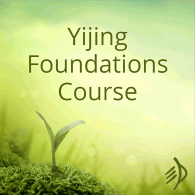
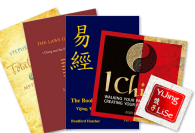
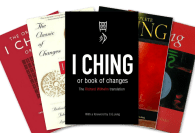
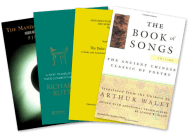


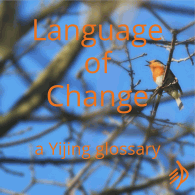
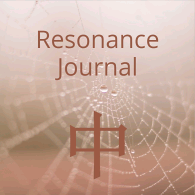

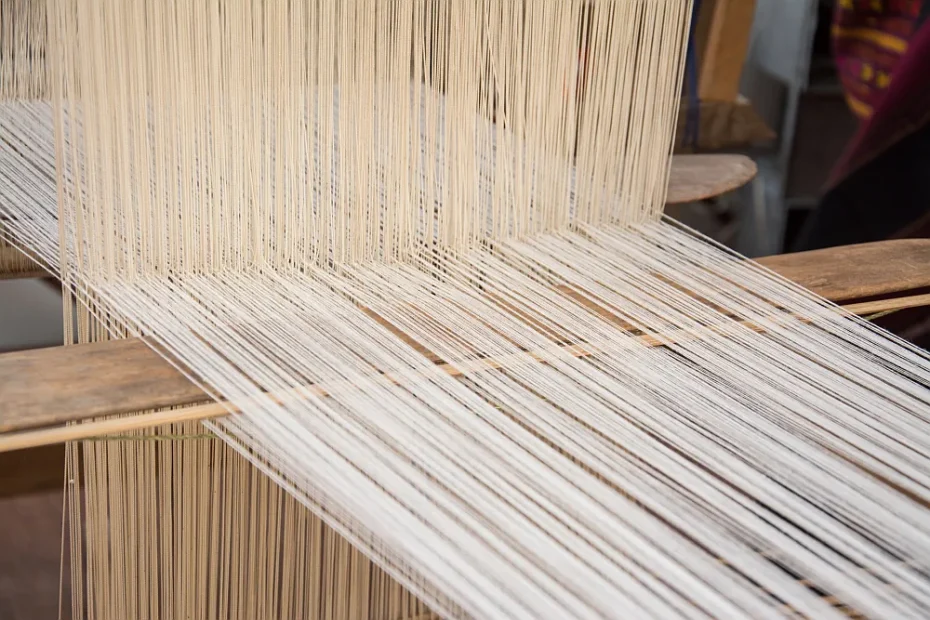
Weaving is an act of Nature, of Magic, and of the Grandmother, not the Maiden. Unfortunately, the patriarch from its inception and its creation which is based off earlier cultures of the Goddess, Shamanism, and Dreaming Cultures which are the oldest. One of the largest symbols of men, is old men and young maidens, one which completely eradicated through time, the circle of everyone, in Grandmothers Circle, her weaving of her societies. We do have a few ancient tribes left today who are matriarchal.
The one thing I do love about peasant taoism, is that regular women, reached enlightenment and their Goddesses reflect this teaching. The I Ching is a very good, practical behavior guide for the life of the emotional or physical person who struggles, but the depth of why the struggle is so deep in modern times, is our rememberance of our emotional body, and our soul bodies have purpose, but not in the patriarch. There is where the ancient pre-patriarchal weaving must be embraced.
Healing of all four bodies that we have are difficult to heal, but approaching the cultural dominance of mind/body against the invisible and repressed bodies of our emotions and our elusive soul, requires opposition medicine, even within the I Ching. I have found this to be true after 42 years of working with it, as a real practice. I do my yearly I Ching on the Spring Equinox and practice it over the four seasons and always in February, the physical manifestation occurs of how I did, with completion or partial completion as a practice.
Example, last year was a huge year for me, an ending to my karmic purification lifetime since I was 17 years old, and with a much older sister who did the I Ching in the 1970s I was blessed early in my life to begin the practice. My I Ching for my ending year of my adult life, and the painful karmic purificaitons was: Hexagram 64 (Wei Ji, “Before Completion”), which symbolizes the importance of caution and avoiding overreach, especially when nearing a goal, as a small misstep can lead to failure. It speaks of the fox not getting its tail wet crossing the river.
In February, I was driving down the river road along the big river, and I see a coyote crossing the road, I pull over and watch it and it crosses the “frozen river” over to the island in the middle. Because I always get a manifstation after the 11th month, it was a welcomed site as his tail was high and no where near the frozen water. I am more of a coyote archetype as a shaman this lifetime, as a fox, so I understood the physical manifestation of my conclusion of before completion. This year’s I ching on the Spring Equinox is #33 Retreat.
I approach the I Ching as a real practice for four seasons and the occassional 13th moon like we had in 2025, and again coming in 2028. Its teaching, is based on the more higher level of masculine, but do not forget the sacred feminine half, otherwise, the coyote (or fox) would have never appeared in the physical teaching of the soul.